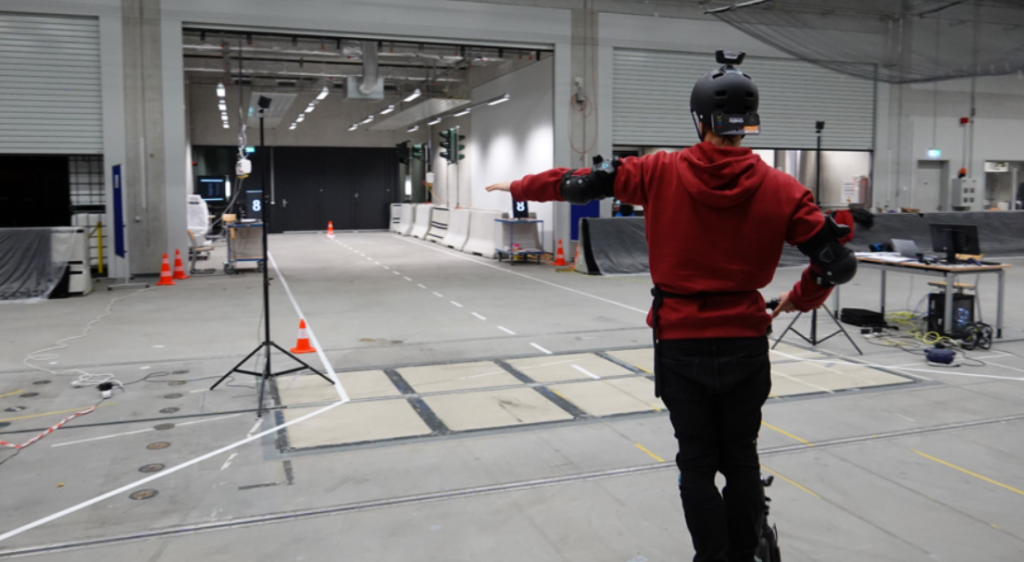E-scooters are omnipresent in larger cities. As part of this project, we want to investigate to what extent drivers of e-scooters with hand signals can “safely” indicate where they are turning. On the one hand, this concerns the perceived safety that e-scooter drivers could be discouraged from giving hand signals and, on the other hand, the actual stability of the ride. The goal is to assess safety issues related to the use of e-scooters in regular road traffic (in regions with no bike lanes).
We conducted a small user study with ten novice drivers outside to observe their driving behavior. For this task, we prepared a T-crossing with a lane width of 2 m and let participants turn left and right several times with and without requiring them to make a hand gesture. The results indicate that performing hand gestures increases the workload of the driver. Also, perceived safety was rated lower when performing hand gestures. However, we saw an apparent learning effect. The mean workload after 10 drives with hand gestures was reduced by 40 % after 10 more maneuvers. Without gestures, the workload started 20% lower but was still reduced by 50 %. The perceived safety is higher for driving without giving gestures, but all participants felt they would be safe while giving hand gestures after the experiment.

A detailed analysis of the recorded videos will reveal more objective measures like the impact on the speed and how often participants struggled to keep the lane while giving hand signals. However, no participants struggled much with driving the e-scooter while performing hand gestures in our setup.
We conducted the second study inside the CARISSMA building with 24 participants with several sensors attached to the e-scooter. This way, we can measure if and how much the drives became less stable. We also asked participants to glance over their shoulders before they turned to have a more demanding and realistic driving task.

Summary of the project:
Published Papers:
Dr. Andreas Löcken: Impact of Hand Signals on Safety: Two Controlled Studies With Novice E-Scooter Riders. AutomotiveUI ’20: 12th International Conference on Automotive User Interfaces and Interactive Vehicular ApplicationsSeptember 2020 Pages 132–140. DOI: 10.1145/3409120.3410641
Pascal Brunner: Analysis of experimental data on dynamics and behavior of e-scooter riders and applications to the impact of automated driving functions on urban road safety. 2020 IEEE Intelligent Vehicles Symposium (IV), 19 Oct.-13 Nov. 2020, DOI: 10.1109/IV47402.2020.9304835
Employees: Andreas Löcken
Project Duration
June 2019 – December 2019
Funding

